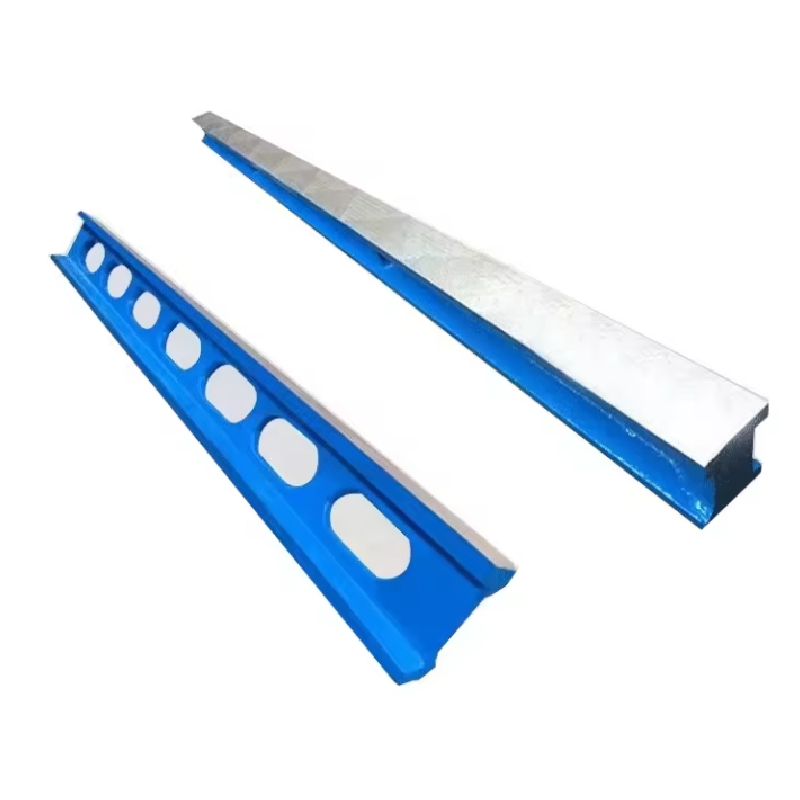Dhj . 05, 2024 16:48 Back to list
Choosing the Right Size for Magnetic V Blocks in Your Workshop
Understanding Magnetic V Blocks and Their Size Considerations
Magnetic V blocks are essential tools used in precision machining, assembly, and inspection processes. They are particularly favored in workshops and manufacturing environments where holding objects securely in place is paramount. The unique design of magnetic V blocks, which feature a V-shaped groove, allows them to hold cylindrical or irregularly shaped workpieces effectively. This article explores the various considerations regarding the size of magnetic V blocks, their applications, and why selecting the correct size is critical for effectiveness and efficiency in operations.
What is a Magnetic V Block?
A magnetic V block is a specialized clamping device equipped with a powerful magnet that secures the workpiece in place. The V-shape of the block enables it to cradle cylindrical objects, providing stability during machining or inspection processes. The magnetic feature allows for quick setup and repositioning, making it an invaluable tool in both professional and hobbyist environments.
Importance of Size in Magnetic V Blocks
When selecting a magnetic V block, size plays a crucial role in its effectiveness. The size of the block should correspond to the dimensions of the workpieces being handled. Using a block that is too small may not grip the workpiece securely, leading to potential hazards such as workpiece movement during machining. Conversely, a block that is too large may be cumbersome and difficult to maneuver, reducing operational efficiency. Therefore, understanding the size requirements for the specific tasks at hand is imperative.
Common Sizes and Their Applications
Magnetic V blocks are available in various sizes to accommodate different workpiece dimensions. Common sizes range from small blocks designed for micro-machining to larger versions capable of handling substantial materials used in industrial applications.
- Small Magnetic V Blocks Typically measuring around 2 to 5 inches in height and width, these blocks are ideal for small machined parts, precision assembly tasks, or for use in laboratories where intricate components require meticulous handling.
- Medium Magnetic V Blocks Ranging from 6 to 10 inches, these blocks are versatile and can be used for a wide variety of tasks, including holding larger cylindrical parts or when multiple components need to be assembled simultaneously.
magnetic v block size

- Large Magnetic V Blocks More than 10 inches in size, these blocks are engineered for heavy-duty applications. They are suitable for significant machining processes and can secure large pieces of metal or other materials effectively.
Factors Influencing Selection
Several factors influence the selection of the appropriate size for magnetic V blocks
1. Workpiece Dimensions The physical dimensions of the workpieces are the primary consideration. Blocks should be selected based on the maximum diameter and weight of the pieces being held.
2. Type of Operation Different machining or assembly processes may require specific sizes. More complex operations may need specialized tools for enhanced stability.
3. Machining Tolerances Precision tasks may necessitate a block that can maintain tighter tolerances, which can impact size selection.
4. Workspace Constraints The available workspace may dictate block size to maintain efficient workflows without overcrowding the working area.
5. Magnet Strength The strength of the magnets in the V block should also be correlated with its size to ensure that the holding force is sufficient for the intended job.
Conclusion
In conclusion, the size of a magnetic V block is a fundamental aspect that affects its utility and performance in various machining and inspection processes. Proper selection based on workpiece dimensions, type of operation, and workspace limitations can significantly enhance efficiency and safety in manufacturing environments. By understanding the importance of size and the various options available, professionals can make informed decisions, ensuring that they choose the right magnetic V block for their specific needs. This attention to detail not only optimizes performance but also contributes to the overall success of machining operations.
-
Why Metric Trapezoidal Thread is Ideal for Precision Motion ControlNewsAug.05,2025
-
The Unique Properties of a Block of Granite for Industrial UseNewsAug.05,2025
-
The Role of Flanged Y Strainers in Preventing Pipeline ClogsNewsAug.05,2025
-
The Importance of Regular Calibration for Master Ring GagesNewsAug.05,2025
-
How a Cast Iron Surface Table Enhances Accuracy in ManufacturingNewsAug.05,2025
-
Comparing Different Check Valve Types for Optimal Flow ControlNewsAug.05,2025
Related PRODUCTS









